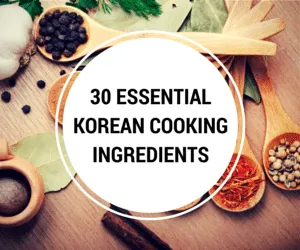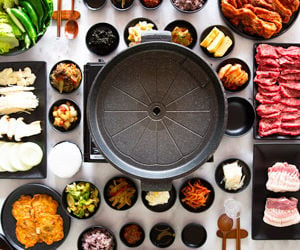
The relationship between a lady who runs a banchan shop and an elite maths academy teacher. The struggles of students, parents and teachers in the highly competitive field of private academy classes.
Korean Title:
일타 스캔들
Describer:
Writer:
Director:
Lead Cast:
Supporting Cast:
Original Network:
Production Company:
Watched on:
Episodes:
Our Comments
We really enjoyed this series. It is a combination of romantic drama with some light comedic moments, but also with an ongoing mystery, culminating in more serious episodes near the end dealing with the mystery.
The acting is great, especially in how they portray the issues the show deals with, including suicide, the social damage caused by gossip, murder, the stress that teens go through at school and private academy (Hagwon) classes in South Korea, parental pressure causing mental breakdowns, as well as autism.
A good part of the series is set in the banchan (Korean side dish) store that the main female lead runs. However, even with all those potential side dishes to feature, they hardly show any of them. It is a bit of a lost opportunity to show off the many amazing Korean side dishes.
Even though a good portion of the storyline in Crash Course in Romance is about the importance of good food to one’s health, most of the dishes shown are incidental to the storyline. They don’t focus much on the food, and it is only occasionally that they focus on what is being eaten. Nonetheless, there are still a good number of different types of Korean food shown.
The series will keep you wanting to watch the next one, but the great thing about it (as with many Korean dramas) is that you know they’ll close out the storyline properly very soon (in this season), as it’s a one-season series.
Crash Course in Romance has a good, satisfying ending, with all the issues of the characters explained and resolved, so you won’t finish feeling “but what about…?”
Food Featured in “Crash Course in Romance”
Baechu Kimchi, 배추김치 (Napa Cabbage Kimchi)
Episode 1, 2
Gyeran Mari, 계란말이 (Korean Egg Roll)
Episode 1, 8, 16
Dubu Jorim, 두부 조림 (Korean Braised Tofu)
Episode 1, 2
Myulchi Bokkeum,멸치볶음 (Pan Fried Anchovies)
Episode 2
Gosari Namul, 고사리 나물 (Seasoned Fernbrake)
Episode 2
Chimaek, 치맥 – (Korean Fried Chicken) 후라이드 치킨 + (Beer) 맥주
Episode 2
Mechurial Jorim, 메추리알 조림 (Braised Quail Eggs)
Episode 2, 8
Gujeolpan, 구절판 (Nine Section Dish)
Episode 3
Bulgogi, 불고기 (Korean BBQ Beef)
Episode 3
Jjimdak, 찜닭 (Braised Chicken)
Episode 4
Gwail Saelleodeu, 과일 샐러드 (Korean Fruit Salad)
Episode 5
Hobak Jeon, 호박전 (Korean Pan Fried Zucchini)
Episode 5
Oi Kimchi, 오이 김치 (Cucumber Kimchi)
Episode 5
Sukju Namul Muchim, 숙주나물 무침 (Korean Bean Sprout Salad)
Episode 5
Jeyuk Bokkeum, 제육볶음 (Korean Spicy Stir Fried Pork)
Episode 5
Japchae, 잡채 (Glass Noodle Stir Fry)
Episode 5, 8
Sikhye, 식혜 (Sweet Rice Drink)
Episode 6
Gimmari, 김말이 (Fried Seaweed Rolls)
Episode 6
Chueo-tang, 추어탕 (Loach Soup)
Episode 6
Godeungeo-gui, 고등어구이 (Grilled Mackerel)
Episode 8
Samgak Kimbap, 삼각김밥 (Triangle Kimbap)
Episode 9
Banana Uyu, 바나나 우유 (Korean Banana Milk)
Episode 9
Yubu Chobap, 유부초밥 (Inari Sushi)
Episode 12
Oi Muchim, 오이무침 (Korean Cucumber Salad)
Episode 16
Samgyeopsal-gui, 삼겹살 (Korean Pork Belly BBQ)
Episode 16







